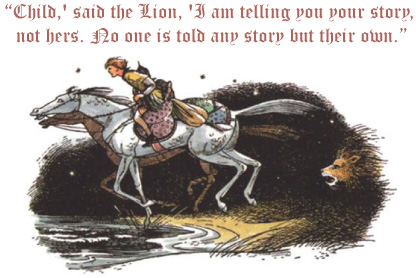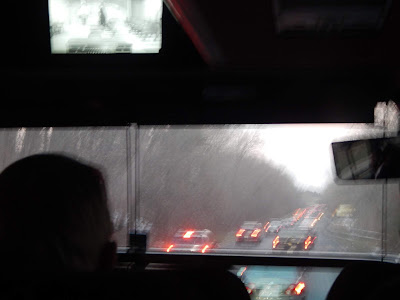My
plans for this year will be humble, not because I don’t plan to read much but I
don’t plan to plan much.
 The
reads I know I’m reading include the last canticle of Dante’s Divine Comedy, his journey through heave,
Paradisio. And as last year with Inferno and Purgatorio, I will be reading two
different translations, the Hollander and Hollander husband and wife team (the
translation I consider the best) and the Anthony Esolen, which is also very
good. I’m reading two translations to
absorb it better and bounce one off the other.
We are reading Paradisio for
the Catholic Thought Book Club at Goodreads. By the way, the book club would love to have you, so come on over. ;)
The
reads I know I’m reading include the last canticle of Dante’s Divine Comedy, his journey through heave,
Paradisio. And as last year with Inferno and Purgatorio, I will be reading two
different translations, the Hollander and Hollander husband and wife team (the
translation I consider the best) and the Anthony Esolen, which is also very
good. I’m reading two translations to
absorb it better and bounce one off the other.
We are reading Paradisio for
the Catholic Thought Book Club at Goodreads. By the way, the book club would love to have you, so come on over. ;)
Once
we are done with Dante, the book club’s next read will be The Imitation of Christ by Thomas à Kempis. This will be a re-read for me and I know I
posted my thoughts here at my blog several years ago when I first read it. I wonder if my thoughts on it will change.
For
my parish Bible study—they just call it that, but as you can see we read other
works—we are reading Mike Aqulina’s The
Fathers of the Church: An Introduction to the First Christian Teachers. It’s a survey book of most of the church
fathers.
Also
on the read list will be the next novels in a series I’ve been reading
through. One series is Ford Madox Ford’s
tetralogy, Parade’s End, centered on
the main character, Christopher Tietjens, and his World War I experiences. I am up to the last novel of the series, Last Post. There is also the final volume of Victor
Hugo’s Les Misérables. The huge epic is made up of five volumes in
which I treat each volume as a novel.
The fifth volume is called, “Jean Valjean.” I’ll be continuing in the C. S. Lewis, The Chronicles of Narnia series. I’m up to the third book when considered
chronologically, The Horse and His Boy.
Of
course I’m continuing my read through the Bible. I’m up to the Book of Jeremiah and the Book
of Lamentations in the Old Testament, and all the short letters in the New
Testament: Letter of James, First and Second Letters of Peter, First,
Second, and Third Letters of John,
and the Letter of Jude. As usual I will be reading both the KJV and
NIV translations.
I
have to pick up on the series of short stories I have lapsed in keeping the
last few years. I’ve been trying to go
through the complete short stories of Ernest Hemingway, Vladimir Nabokov, and
Evelyn Waugh. And I’ll try to
sporadically and randomly add short stories as they pique my interest. I doubt I can get back to two per month, but
I’ll do the best I can.
And
that’s it as far as plans. I’ve created
two groups of books here below, books “On Pause” and a books “Wish List.” I’m
tired of just saying I will eventually read books I haven’t completed. So now I will list those books as “on
pause.” They are books I’ve started but
have stopped reading and that I still want to finish. And then there is a wish list of books that I
may squeeze in this year if the opportunity and time allows. You can see what is on both lists.
Perhaps
some other book jumps up at me creaming to be read—that happens all the
time—and I will alter my plans. I know I
will also be reading a couple of more books for the Catholic Thought Book Club,
we just don’t know what they are yet.
They have not been voted on.
With
that, Happy belated New Year and see you at the library. ;)
Completed
First Quarter:
“The
Background,” a short story by Saki (H. H. Munro).
“How
to Mark a Book,” an essay by Mortimer J. Adler.
Currently Reading:
Paradisio, 3rd part of the epic poem, The Divine Comedy
by Dante Alighieri, translated and annotated by Robert and Jean Hollander.
Paradisio, 3rd part of the epic poem, The Divine Comedy
by Dante Alighieri, translated and annotated by Anthony Esolen.
The Fathers of the Church: An
Introduction to the First Christian Teachers,
3rd Edition, a non-fiction work by Mike Aquilina.
"Why Bugsy Siegel Was a Friend
of Mine," a short story by James Lee Burke.
Upcoming Plans:
Book
of Jeremiah, a book of the Old Testament, KJV
Translation.
Book
of Jeremiah, a book of the Old Testament, NIV
Translation.
“The
Light of the World,” a short story by Ernest Hemingway.
“God
Rest You Merry Gentleman,” a short story by Ernest Hemingway.
“The
Sea Change,” a short story by Ernest Hemingway.
“A
Matter of Chance,” a short story by Vladimir Nabokov.
The
Imitation of Christ, a non-fiction devotional by Thomas à
Kempis.
“The
Manager of ‘The Kremlin,’” a short story by Evelyn Waugh.
On Pause:
Julius Caesar: Life of a Colossus, a biography by Adrian Goldsworthy.
The Virgin and the Gipsy, a short novel by D. H. Lawrence.
Hildegard of Bingen: Selected
Writings, a collection translated and edited
by Mark Atherton.
Fra Angelico (Metropolitan Museum of
Art Series), a non-fiction work on art by
Laurence Kanter, Pia Palladino, and others.
The Life of Saint Dominic, a biography by Augusta Theodosia Drane.
Wish List:
Think
Like A Cat, a non-fiction help book by Johnson-Bennett.
The
Remains of the Day, a novel by Kazuo Ishiguro.
The
Red and the Black, a novel by Stendhal (Marie-Henri Beyle).
Notes
From Underground, a novella by Fyodor Dostoevsky.
Crazy
in Berlin, a novel by Thomas Berger.
The
Annotated Waste Land with Eliot’s Contemporary Prose a
book of poetry and essays by T.S. Eliot, Lawrence Rainey (ed).
Henry
VI, Part 2, a play by William Shakespeare.


















